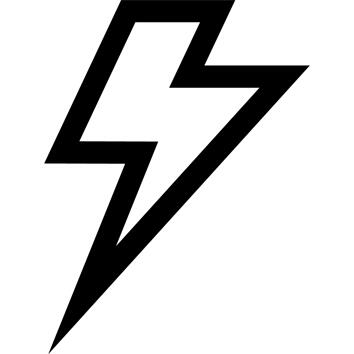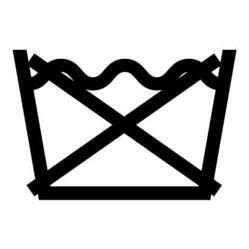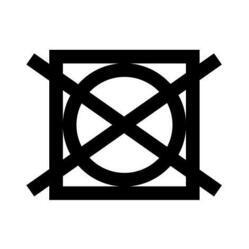Composition
70% wood, 30% carbon
Curvature and weight
lowbow curvature
Detailed product description
Classic grip, surface with some relief, refined profile on the edges. Handle length: 41.5cm. Classic head.
Detailed product description (continued)
Shaft diameter at 12cm from cork: 29mm. Shaft width and perimeter at 47cm from cork: 3.8cm / 10cm.
What materials is a stick made of?
Historically made from wood (ash, mulberry), most sticks (especially the more technical ones) are now made from composite materials (fiberglass, carbon fiber and aramid fiber; NB Kevlar is the brand name for a type of aramid). You'll find sticks made of 100% wood, wood with fiberglass and sometimes carbon reinforcements, 100% fiberglass, fiberglass with an increasingly high percentage of carbon.
What materials is a stick made of? (continued)
(often with 5-10% aramid when the carbon % is very high).
For what qualities of use?
Fiberglass is harder, stiffer, lighter and more abrasion-resistant than wood. You'll get more power, but less control, a feeling of greater hardness. Carbon is even lighter and stiffer, providing even more power and even less control if the level of technical mastery is not sufficient. Aramid is used in addition to carbon, in the shaft to dampen vibrations and/or in the heel for its high resistance to abrasion.
How is a composite stick made?
A composite stick is composed of several sheets of fiber wrapped around an empty core, itself organized into one or more longitudinal cavities. The mix of components, the number of fiber layers and the structure of the hollow core vary from stick to stick and from part to part. In the end, therefore, the mere indication of % carbon gives very little information about the stick's qualities in use.
Which composition to choose?
Beginners will prefer wood. As they learn, children will progress to fiberglass and then to a reasonable % carbon. Adult beginners can start directly with fiberglass. Confirmed and expert adults will choose the carbon content best suited to their playing style (desired balance between control and power).
What is stick curvature?
A field hockey stick is not straight, but has a "bow". Curvature is characterized by its maximum height (the maximum vertical space between a stick resting on a flat surface and that surface) and by the point at which this height is greatest, measured from the end of the head of the stick (called the point of maximum curvature).
What is stick curvature (continued)
Traditionally, a stick had a maximum bend height of around 15mm and a maximum bend point located halfway up the stick.
Types of curvature
A standard bow is defined as having a maximum bend height of 17 to 20mm and a maximum bend point of 300mm. A "mid bow" stick generally has a maximum bend height of 23 to 24mm and a maximum bend point at 300mm. For a "low bow" stick, it's usually 24 to 25mm and 250mm. For an "extra low bow" stick, 24 to 25mm and 200mm.
FIH standard for curvature
According to FIH standards, the maximum bending point of a field field hockey stick must be at least 200mm from the highest point of the stick head, and the maximum bending height is 25mm.
Which curvature to choose?
Beginners will opt for a standard bow stick. An advanced or expert player looking primarily to control the ball, pass or shoot, will choose a "mid bow" stick. An expert player who likes to dribble, play in 3D and have perfect control of the ball during fast movements, will choose a "low bow" stick. For "drag-flicks", choose an "extra low bow" stick.
How much does a stick weigh?
Most adult sticks (sizes 36.5"-37.5") weigh between 520 and 580g. A children's stick will weigh from 400g upwards. Note that there may be differences of 20 to 30g between sticks of the same model, due to the manufacturing process.
FIH standard for weight
According to FIH standards, the maximum weight of a field field hockey stick is 737g. Most adult sticks (sizes 36.5"-37.5") weigh between 520 and 580g. A children's stick will weigh from 400g upwards. Note that there may be differences of 20 to 30g between sticks of the same model, due to the manufacturing process.
Why is balance important?
For the same weight, it's the distribution of mass in the stick that's decisive. The balance point is the stick's center of gravity, measured from the tip of the head. A balance point located more towards the neck will give an impression of lightness. This makes the stick easier to handle. A balance point located more towards the head (the weight is then said to be at the head) will give the impression of having more material in the hand. This increases the stick's power.
What weight/balance should I choose?
If you're looking for maneuverability, choose a light stick with a high balance point. If you're looking for power, choose a heavy stick with a low balance point.
Which size to choose?
Stick size is measured in inches ("). 1"=2.54cm. For an adult, the standard size is 36.5". Some sticks are available in 37.5" or 38.5", sizes that give greater reach and power. These are best suited to high-level players. Players over 1.80 m tall may choose a 37.5" or 38.5", making sure that the stick's other characteristics (composition, curvature, etc.) are adapted to their level of skill.
FIH standard for sizing
According to FIH standards, the maximum length of a field field hockey stick is 41" (105cm).
General council for the choice of a stick
The right stick for you is the one with the right combination of size, composition (and internal structure), curvature, weight and balance point.
Designer
Founded in 1891 by Mr. Allah Dita in Pakistan, in the early days of the sport, Dita has been the source of many of the innovations that have shaped field hockey today. With its unrivalled know-how, Dita designs products that promote creative, high-performance play. The kind played by Seve van Ass, Florent van Aubel and Martin Hâner!
Information
The information given here is that supplied by the manufacturer or verified by us on samples received from the manufacturer.
Product segmentation
adult/confirmed/lowbow/wood-40%carbon





